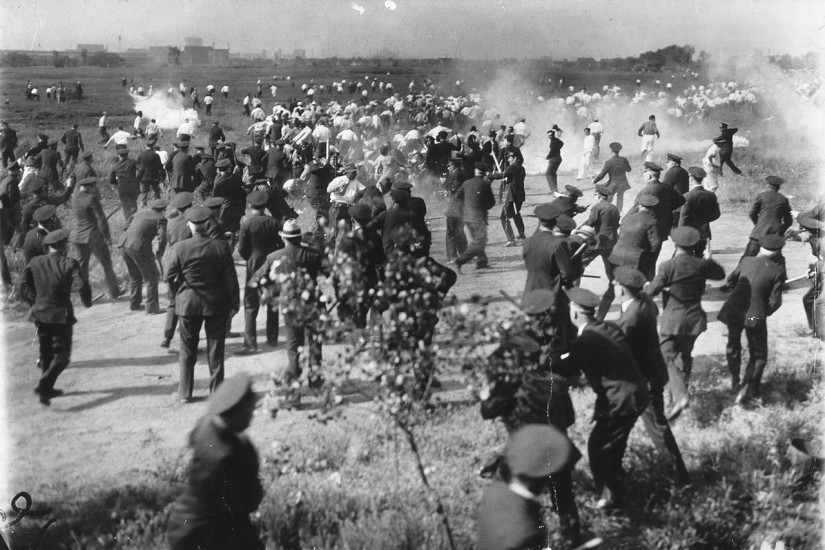Few people think of unions or the plight of the working class when they think of Memorial Day. But they should. On that day, eighty years ago, one of the most important events in American history unfolded, an event that transformed the course of labor rights in this country.
In 1937, most of the country celebrated Memorial Day on May 30, which was a Sunday. In Chicago, the holiday could not have been better accommodated by the bright and warm weather. This made the city’s southernmost reaches an incongruous backdrop to the killing that day of ten unarmed men by the Chicago Police.
This incident, known as the “Memorial Day Massacre,” is what makes this holiday so essential to American history.
The men who were killed were among 1,500 striking steel workers and their supporters who had marched on a plant owned by the Republic Steel Corporation. They were associated with a new labor federation called the Committee for Industrial Organization, or CIO, which in the space of a year had managed, often by audacious and militant strikes, to build unions in long-time anti-union strongholds like General Motors and US Steel.
Republic was a powerful company, one of the largest steel producers in the world. It stood at the head of a coalition of corporations, industry groups, and wealthy people who were intent on destroying the CIO.
In fact, the broader aim of this coalition, which counted among its key members the National Association of Manufactures, the Chamber of Commerce, and a semi-fascist organization called the American Liberty League, was to undo the entire New Deal. Accomplishing this required defeating the CIO, which had emerged as an increasingly powerful ally of the Roosevelt administration.
It also required finding a way to undermine the National Labor Relations Act, or Wagner Act. This new statute was the legislative centerpiece of the New Deal. Just declared constitutional by the Supreme Court in April, it purported to protect the right to strike and engage in collective bargaining, and gave legal license to the CIO’s campaign.
Backed by this coalition, Republic and several other steel producers known collectively as “Little Steel,” unleashed a counteroffensive. They responded to the CIO’s organizing efforts by firing, threatening, and assaulting hundreds of union supporters and categorically refusing to bargain with the union. This was all illegal. But Little Steel’s aim was not to abide by the Wagner Act but to nullify it.
